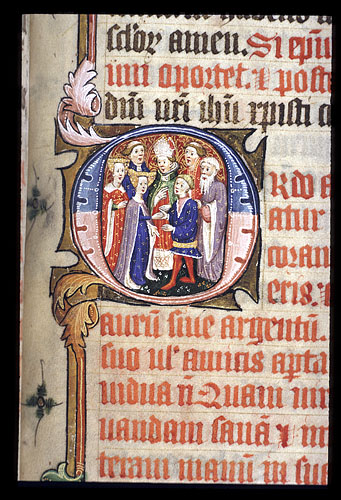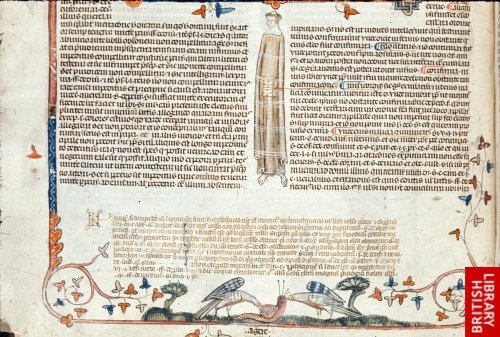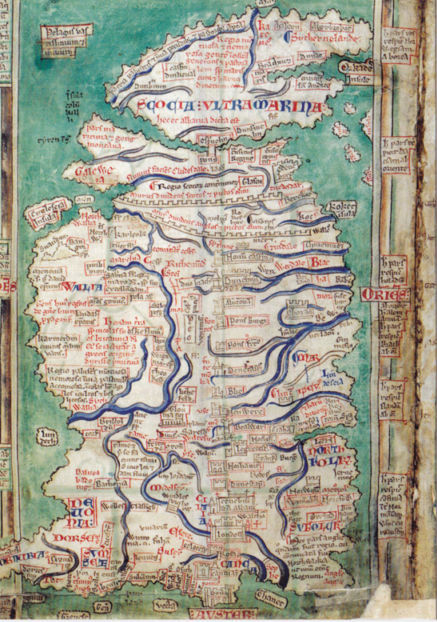School Trip Friday – What did the Romans ever do for us?
According to Monty Python’s view of the Romans, they didn’t do an awful lot for anyone – except, of course:
– Aquaducts
– Sanitation
– Roads
– Irrigation
– Medicine
– Education
– Wine
– Public Baths
– Safe to walk in the streets at night
– Keeping order
– Brought Peace
Whilst our School Trip Friday to Hadrian’s Wall and its surrounding forts didn’t let us confirm or disprove all of Monty Python’s suggestions listed above, we were able to consider some. So here are our final batch of photos from our trip to Hadrian’s Wall which we visited as part of my son’s programme of home education. And here is our view of What did the Romans ever do for us?
Sanitation and latrines
 Housesteads Roman Fort latrines in 2012
Housesteads Roman Fort latrines in 2012

 The latrines in use by the Roman soldiers. Wooden boards with holes in them were placed over the gullies. In the centre were stone water-troughs and sponges for the soldiers to use to clean themselves. This looks to be very much a communal manly event!
The latrines in use by the Roman soldiers. Wooden boards with holes in them were placed over the gullies. In the centre were stone water-troughs and sponges for the soldiers to use to clean themselves. This looks to be very much a communal manly event!
Roman Baths
 The bath-house at Chesters Roman Fort
The bath-house at Chesters Roman Fort
 The Romans placed their bath-house well-away from the main fort because it had to have furnaces capable of producing the high temperatures required for the baths, saunas and hot rooms. Therefore the risk of fire was great and so the bath-house was built separate from the fort.
The Romans placed their bath-house well-away from the main fort because it had to have furnaces capable of producing the high temperatures required for the baths, saunas and hot rooms. Therefore the risk of fire was great and so the bath-house was built separate from the fort.
 Chesters’ bath-house is on the river-bank alongside the River Tyne. Hadrian’s Wall continues to snake through the countryside on the other-side of the river. There was a Roman bridge across the river, but this was washed away during the Roman times and not rebuilt.
Chesters’ bath-house is on the river-bank alongside the River Tyne. Hadrian’s Wall continues to snake through the countryside on the other-side of the river. There was a Roman bridge across the river, but this was washed away during the Roman times and not rebuilt.
 The waiting/relaxing area in the baths. Statues of various Roman gods and godesses were probably in each of the alcoves.
The waiting/relaxing area in the baths. Statues of various Roman gods and godesses were probably in each of the alcoves.
 How many sandalled Roman soldiers walked on this step into the next room whilst relaxing and enjoying their baths? Although they were naked in the baths, it is very likely that they had wear sandals because of the heat and high temperatures pouring from the floors.
How many sandalled Roman soldiers walked on this step into the next room whilst relaxing and enjoying their baths? Although they were naked in the baths, it is very likely that they had wear sandals because of the heat and high temperatures pouring from the floors.
What else did the Romans do for us?
I could show you many more photos from our time at Hadrian’s Wall and the Roman Forts – including all the underfloor heating systems, the large stores built to hold all the grain in the fort, and the Roman town of Corbridge. However, so I don’t bore you, instead I’ll show you what else we learnt during our trip. Now, strictly speaking the Romans didn’t do this for us, but during our trip we had a maths lesson and so learnt the complex calculations needed for flying a kite. Easy-peasy, you may think, but flying a kite is very mathematical with factors such as wind speed, length of the kite’s tail, thickness of the material and weight of the kite. At the end of our kite-flying session, we wrote a report about our experiences.
 Birdoswald Roman Fort – Hadrian’s Wall is the stone-work on the right side of the photo
Birdoswald Roman Fort – Hadrian’s Wall is the stone-work on the right side of the photo
 Flying high!
Flying high!

 Our second kite – this one was too small and too light. This was the highest we got it.
Our second kite – this one was too small and too light. This was the highest we got it.
 Once we got home, our learning about the Romans continued by making a Roman mosaic. We cheated and didn’t do it the good old-fashioned Roman way of individually cutting each piece but, instead, bought a kit from Vindolanda’s wonderful gift-shop.
Once we got home, our learning about the Romans continued by making a Roman mosaic. We cheated and didn’t do it the good old-fashioned Roman way of individually cutting each piece but, instead, bought a kit from Vindolanda’s wonderful gift-shop.
 Mosaic half finished. This is more difficult than it looks! The tiles were already pre-cut into small squares but then we had to trim them into shape. Not easy for a child with severe developmental coordination disorder! Because of the risk of him losing fingers, the task of cutting and shaping the tiles fell to me. This is still work-in-progress and will hopefully be completed over Christmas.
Mosaic half finished. This is more difficult than it looks! The tiles were already pre-cut into small squares but then we had to trim them into shape. Not easy for a child with severe developmental coordination disorder! Because of the risk of him losing fingers, the task of cutting and shaping the tiles fell to me. This is still work-in-progress and will hopefully be completed over Christmas.
 We also bought a (modern-day) Roman dice game ‘Quinquereme‘ – an ideal introduction into the complexities of calculating with Roman numerals.
We also bought a (modern-day) Roman dice game ‘Quinquereme‘ – an ideal introduction into the complexities of calculating with Roman numerals.
 We hope you’ve enjoyed our School Trip Friday to Hadrian’s Wall
We hope you’ve enjoyed our School Trip Friday to Hadrian’s Wall
and here is a photo of your guides,
taken when we were at Housesteads Roman Fort.
Venimus Vidimus Vicimus
All photos are © Essex Voices Past 2012 and
may not be reproduced without permission.
You may also be interested in
– School Trip Friday – Weald and Downland Open Air Museum
– School Trip Friday – Chapel of St Peter’s on the Wall, Bradwell
– School Trip Friday – Imperial War Museum Duxford
– School Trip Friday – Of Cabbages and Kings
– School Trip Friday – Hadrian’s Wall
– School Trip Friday – Messages from England’s Roman Past






 Coca-Cola
Coca-Cola
 This large boulder is by Hadrian’s Wall on the Steel Rigg to Sycamore Gap section. The boulder has a perfectly smooth Roman-bottom shaped indentation. How many poor frozen Roman soldiers stole a few minutes rest on this stone?
This large boulder is by Hadrian’s Wall on the Steel Rigg to Sycamore Gap section. The boulder has a perfectly smooth Roman-bottom shaped indentation. How many poor frozen Roman soldiers stole a few minutes rest on this stone? The view of Vindolanda Roman Fort from the nearby hilltops. The fortification is a modern-day reconstruction of one of Hadrian’s Wall
The view of Vindolanda Roman Fort from the nearby hilltops. The fortification is a modern-day reconstruction of one of Hadrian’s Wall 
 Modern-day memorial to the various cohorts of Roman soldiers who lived, fought and died at Vindolanda between 85AD and 400AD. The S.P.Q.R. means Senātus Populusque Rōmānus (“The Senate and People of Rome”).
Modern-day memorial to the various cohorts of Roman soldiers who lived, fought and died at Vindolanda between 85AD and 400AD. The S.P.Q.R. means Senātus Populusque Rōmānus (“The Senate and People of Rome”). From exploring this fort, my son (and I!) learnt that the soldiers lived in barracks – all built in strict straight lines with typical Roman efficiency. The site’s archaeologist told us how on one of the excavations, they found under the Roman floor level in one of the barracks , the remains of a female thought to be about 10 years old. We can only guess at the horrors of why and how her life ended and her body then concealed.
From exploring this fort, my son (and I!) learnt that the soldiers lived in barracks – all built in strict straight lines with typical Roman efficiency. The site’s archaeologist told us how on one of the excavations, they found under the Roman floor level in one of the barracks , the remains of a female thought to be about 10 years old. We can only guess at the horrors of why and how her life ended and her body then concealed. Vindolanda’s modern day reconstructions of a milecastle and fortification from Hadrian’s Wall. The building on the left is wooden, whilst the one of the right is stone. Archaeologists are using these reconstructions to help them analyse and understand how environmental factors influenced the longevity and durability of the various structures built in this area during Roman times.
Vindolanda’s modern day reconstructions of a milecastle and fortification from Hadrian’s Wall. The building on the left is wooden, whilst the one of the right is stone. Archaeologists are using these reconstructions to help them analyse and understand how environmental factors influenced the longevity and durability of the various structures built in this area during Roman times. The view from the top of the stone reconstructed fort. The mid-day sun casting the shadow of the wooden fort across the landscape of Vindolanda. Our visit took place the weekend before all the November storms that have recently lashed across Britain – we were lucky and had bright sunshine with no rain at all during the entire weekend.
The view from the top of the stone reconstructed fort. The mid-day sun casting the shadow of the wooden fort across the landscape of Vindolanda. Our visit took place the weekend before all the November storms that have recently lashed across Britain – we were lucky and had bright sunshine with no rain at all during the entire weekend. Vindolanda Tablet 291: This is a birthday party invitation from Claudia Severa (wife of Aelius Brocchus, commander of an unnamed fort near Vindolanda) to Sulpicia Lepidina (wife of Flavius Cerialis, commander at Vindolanda). This letter was written partly by a scribe but also includes part of the message written in Claudia’s own hand. This is the oldest surviving writing of a Roman woman found in Britain (so far!).
Vindolanda Tablet 291: This is a birthday party invitation from Claudia Severa (wife of Aelius Brocchus, commander of an unnamed fort near Vindolanda) to Sulpicia Lepidina (wife of Flavius Cerialis, commander at Vindolanda). This letter was written partly by a scribe but also includes part of the message written in Claudia’s own hand. This is the oldest surviving writing of a Roman woman found in Britain (so far!). Strong-room at Vindolanda fort – by the shape of it, this must have been a fairly large underground room.
Strong-room at Vindolanda fort – by the shape of it, this must have been a fairly large underground room. Strong-room at
Strong-room at  Strong-room at
Strong-room at  The stairs down into Corbridge’s strong-room. The width of each tread is only about half my foot’s length – I felt very sorry for the poor sandalled Roman soldiers who had to make their way up and down these dark stairs!
The stairs down into Corbridge’s strong-room. The width of each tread is only about half my foot’s length – I felt very sorry for the poor sandalled Roman soldiers who had to make their way up and down these dark stairs!










 Map of Hadrians Wall and Antonine Wall (Matthew Paris c1250)
Map of Hadrians Wall and Antonine Wall (Matthew Paris c1250) The rugged landscape of Hadrian’s Wall running alongside Crag Lough.
The rugged landscape of Hadrian’s Wall running alongside Crag Lough. Contemplating the fact that we were down the bottom and had to be up there. Also time to explore how echoes work and how loud you have to shout to produce a magnificent rebounding sound!
Contemplating the fact that we were down the bottom and had to be up there. Also time to explore how echoes work and how loud you have to shout to produce a magnificent rebounding sound! Hadrian’s Wall running off upwards into the distance. The wall becomes a reasonably modern farmer’s dry stone wall half way up, then continues on as Hadrian’s Wall.
Hadrian’s Wall running off upwards into the distance. The wall becomes a reasonably modern farmer’s dry stone wall half way up, then continues on as Hadrian’s Wall. The long and winding road
The long and winding road Hadrian’s Wall and a small fortification to the side of it.
Hadrian’s Wall and a small fortification to the side of it. The perilous stone stairs to the top are not known as ‘Cat Stair’s for nothing. These were, in fact some of the better & safer steps on the climb. The stairs seem to be relatively modernish – I pity the person who had to build them!
The perilous stone stairs to the top are not known as ‘Cat Stair’s for nothing. These were, in fact some of the better & safer steps on the climb. The stairs seem to be relatively modernish – I pity the person who had to build them! The view from the top looking down to where we once had been.
The view from the top looking down to where we once had been. Hadrian’s Wall snaking off into the distance. The turf on top of the wall was an early (successful) conservation attempt of the Wall by Victorian land owner, antiquarian, and town clerk,
Hadrian’s Wall snaking off into the distance. The turf on top of the wall was an early (successful) conservation attempt of the Wall by Victorian land owner, antiquarian, and town clerk,  Good solid Roman engineering. Each stone perfectly shaped by hand and precisely placed into position using the same style that we see in modern-day brickwork. Built for strength and durability – the Wall has already lasted for nearly 2,000 years. What did the Romans ever do for us?…
Good solid Roman engineering. Each stone perfectly shaped by hand and precisely placed into position using the same style that we see in modern-day brickwork. Built for strength and durability – the Wall has already lasted for nearly 2,000 years. What did the Romans ever do for us?… Tiny tiny alpine flowers growing all along the wall.
Tiny tiny alpine flowers growing all along the wall. Father and son enjoying their home education.
Father and son enjoying their home education.
 Richard III, postcard from Tuck’s Kings & Queens, c.1902
Richard III, postcard from Tuck’s Kings & Queens, c.1902 Richard III, cigarette card
Richard III, cigarette card Richard III, games card
Richard III, games card
















